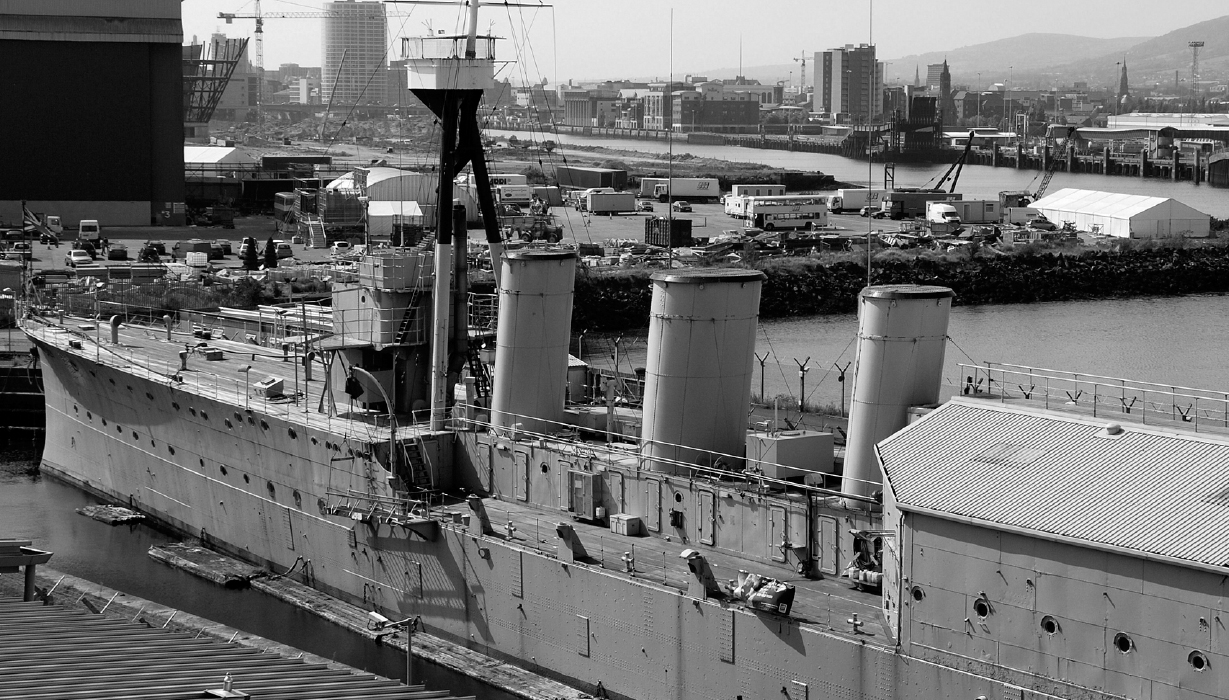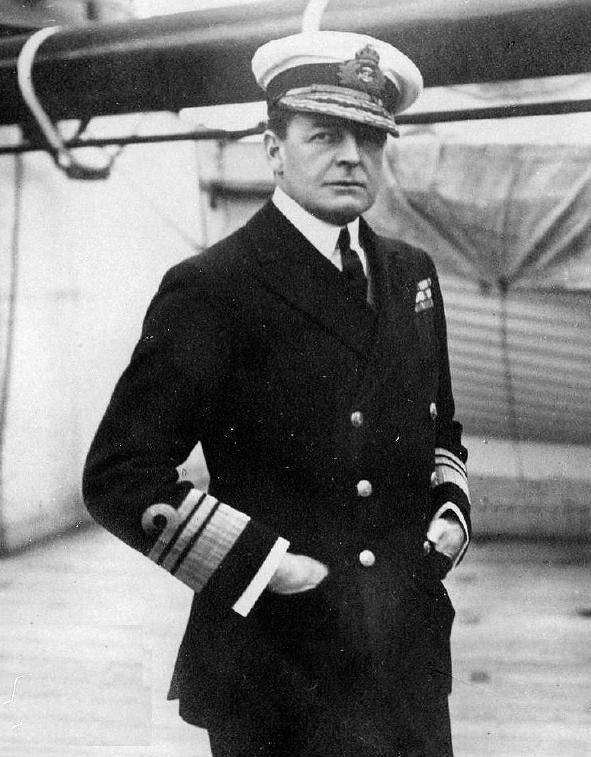
The 1st Earl Beatty (17 January 1871 – 11 March 1936) whilst a Vice Admiral. (Historic Military Press)
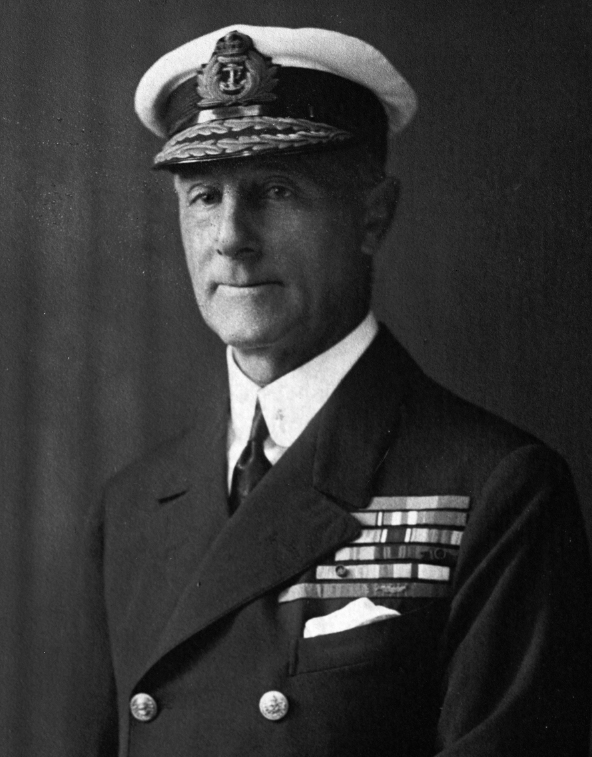
Admiral John Jellicoe (5 December 1859 – 20 November 1935), pictured wearing the uniform of Admiral of the Fleet, the rank he attained in 1919. (US Library of Congress)
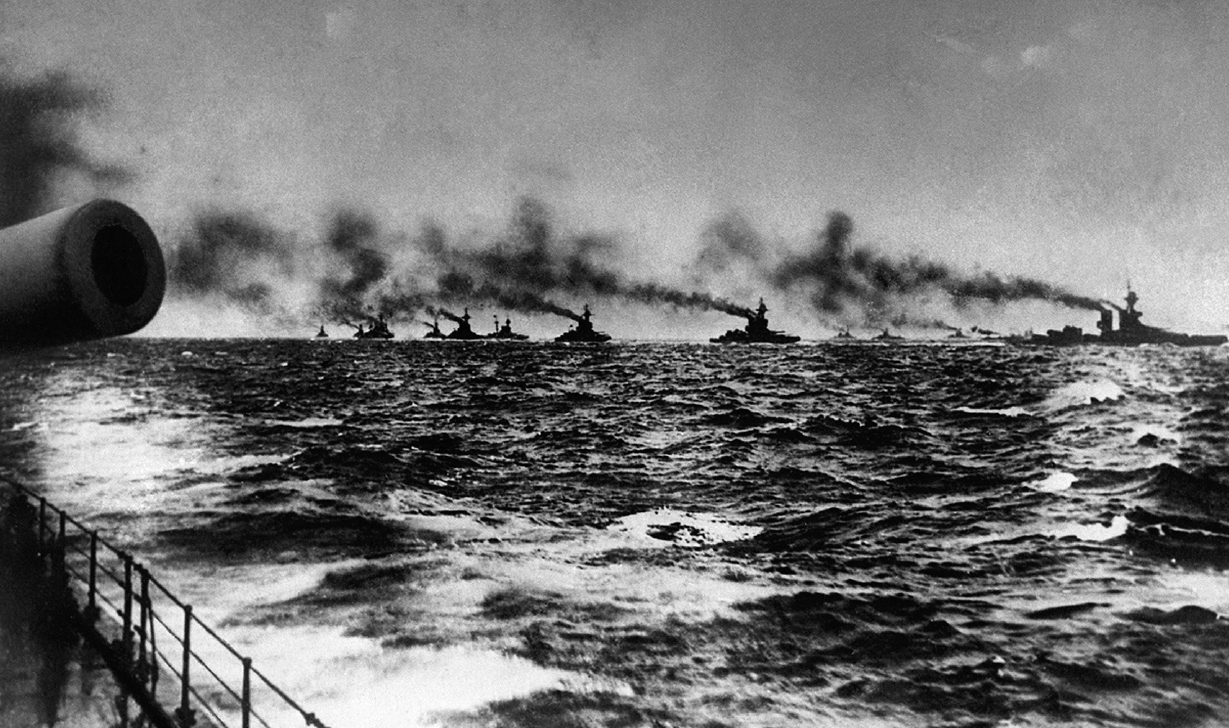
The British Grand Fleet on its way to meet the warships of Imperial German Navy’s High Seas Fleet in the North Sea on 31 May 1916. (NARA)
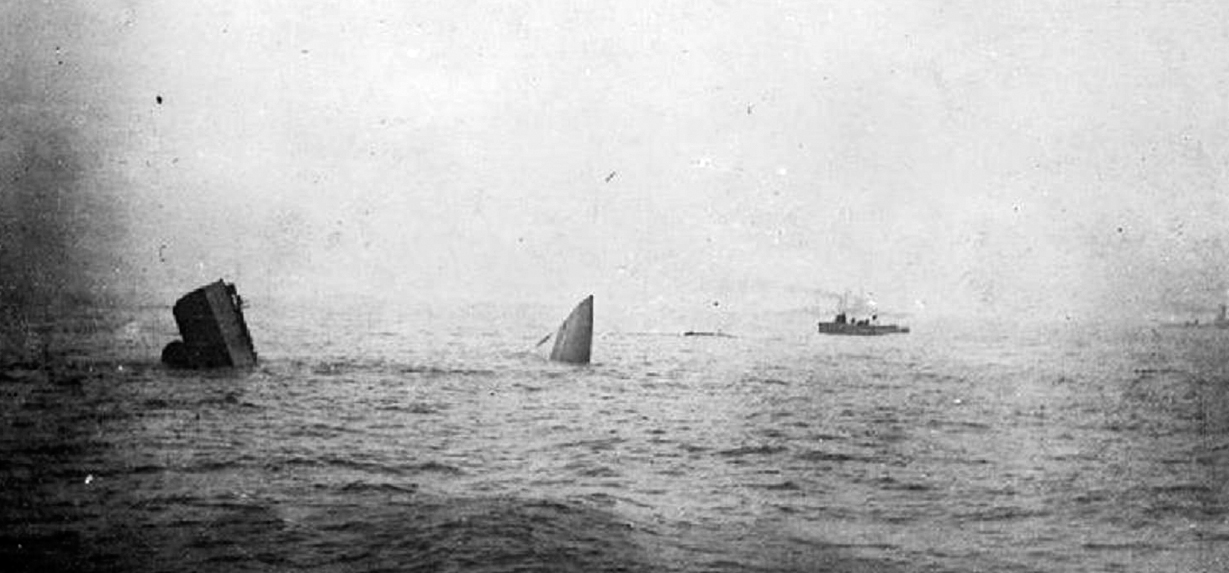
The bow and stern of HMS Invincible sticking out of the water as the battlecruiser sinks. The destroyer HMS Badger is desperately searching for survivors. Invincible’s remains were first located in 1919 and she was found to have been blown in half by the explosion. Pieces of the wreckage rest on a sandy bottom near each other, the stern right-side up and the bow upside-down. The roof of the aft 12-inch turret is missing, the guns still loaded. (Historic Military Press)
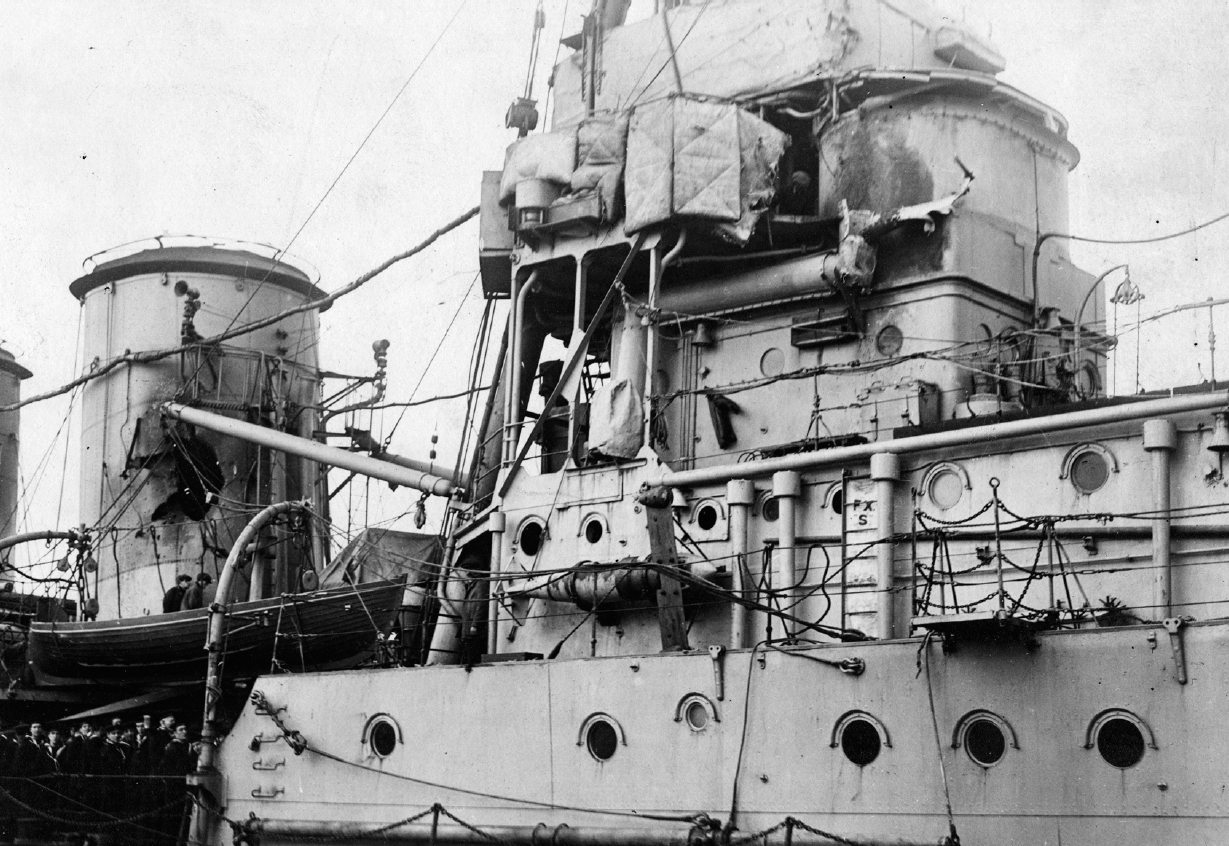
Damage caused to a British light cruiser at Jutland. Unfortunately, it is not known which of the light cruisers damaged this is. Two, HMS Black Prince and HMS Tipperary, were sunk, whilst HMS Southampton was the light cruiser hit the most times – with eighteen shells striking her. (Historic Military Press)
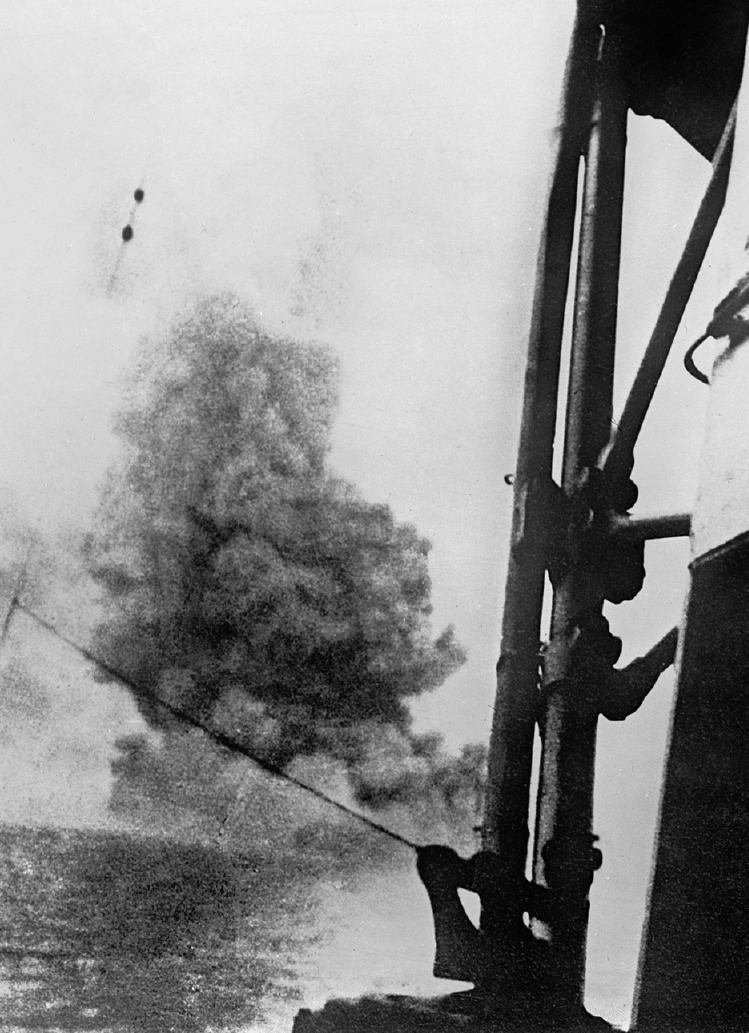
Taken from the deck of HMS Inflexible, the next ship astern, this picture shows the massive plume of smoke caused when HMS Invincible exploded during the Battle of Jutland after she was hit five times by shells from the German battlecruisers Derfflinger and Lützow. The last hit blew the roof off ‘Q’ Turret and set fire to the cordite propellant. The flash soon spread to the magazine and Invincible was ripped in two by the explosion. She sank with the loss of all but six of her crew of 1,021 (though the number of survivors varies from account to account). One of the survivors, Gunnery Officer Hubert Dannreuther, was the godson of the composer Richard Wagner. Admiral Hood was among the dead. (Historic Military Press)

HMS Royal Oak, HMS Acasta, HMS Benbow, HMS Superb and HMS Canada in action during the battle. The latter had originally been built for the Chilean Navy, but was purchased by the British on the outbreak of war in 1914. During the Battle of Jutland, HMS Canada fired forty-two rounds from her 14-inch guns and 109 6-inch shells. She suffered no hits or casualties. Amongst the targets engaged was the cruiser Wiesbaden. (Historic Military Press)
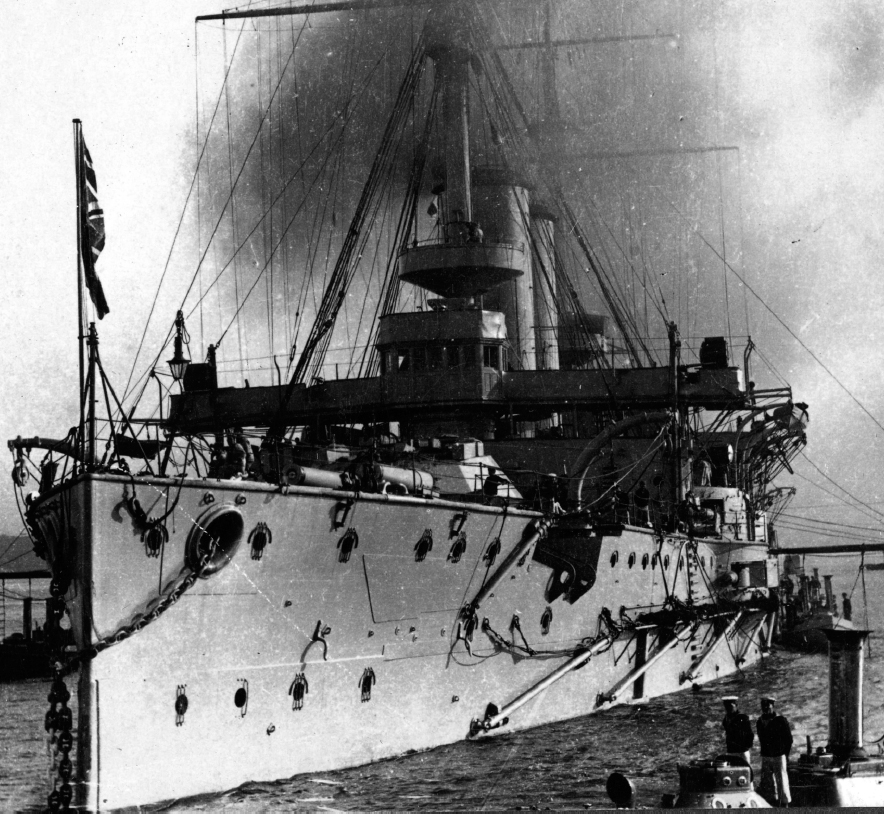
The Royal Navy’s battlecruiser HMS Indomitable pictured in port. She damaged the German battlecruisers Seydlitz and Derfflinger during the Battle of Jutland. (US Library of Congress)
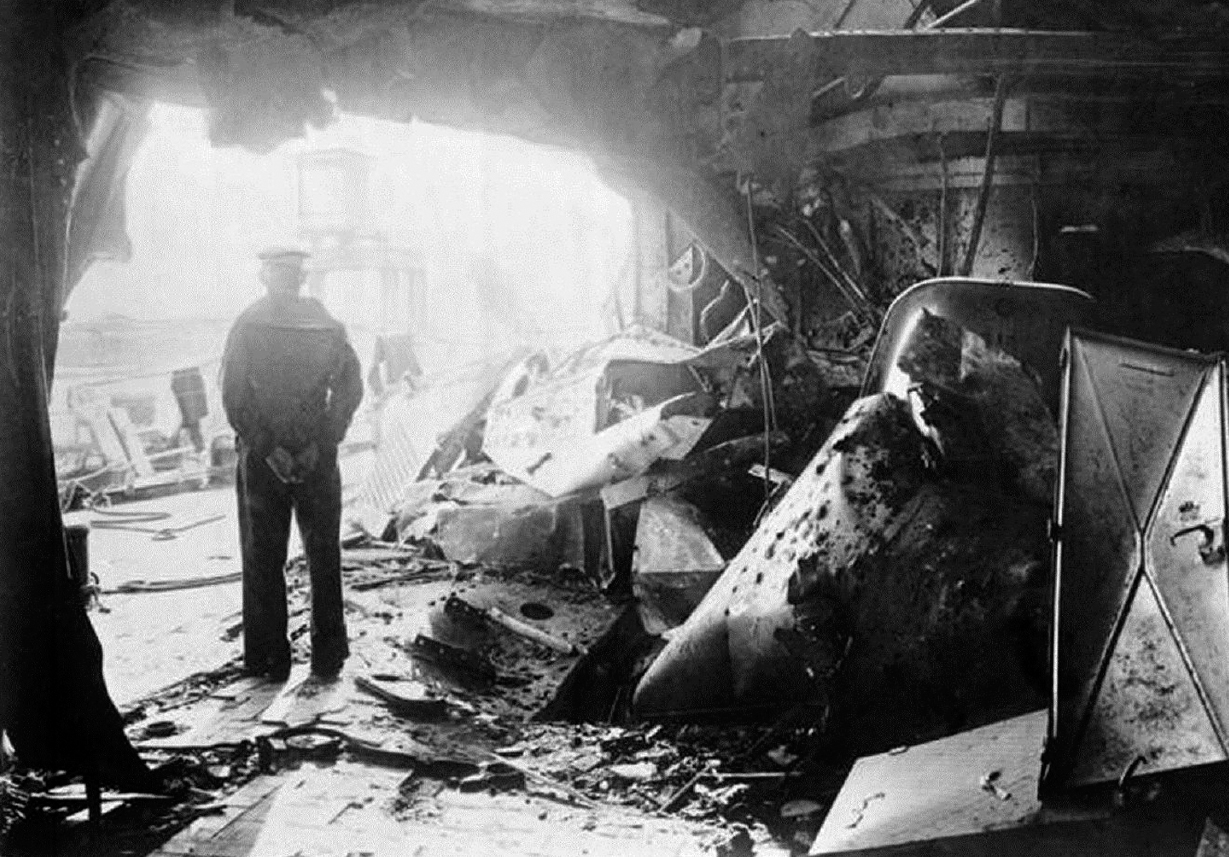
Damage to SMS Derfflinger pictured after the Battle of Jutland. During the course of the engagement, Derfflinger was hit seventeen times by heavy calibre shells and nine times by secondary guns. She was in dock for repairs until 15 October 1916. Derfflinger fired 385 shells from her main battery, another 235 rounds from her secondary guns, and one torpedo. (Bundesarchiv, Bild 134-B2100/CC-BY-SA)
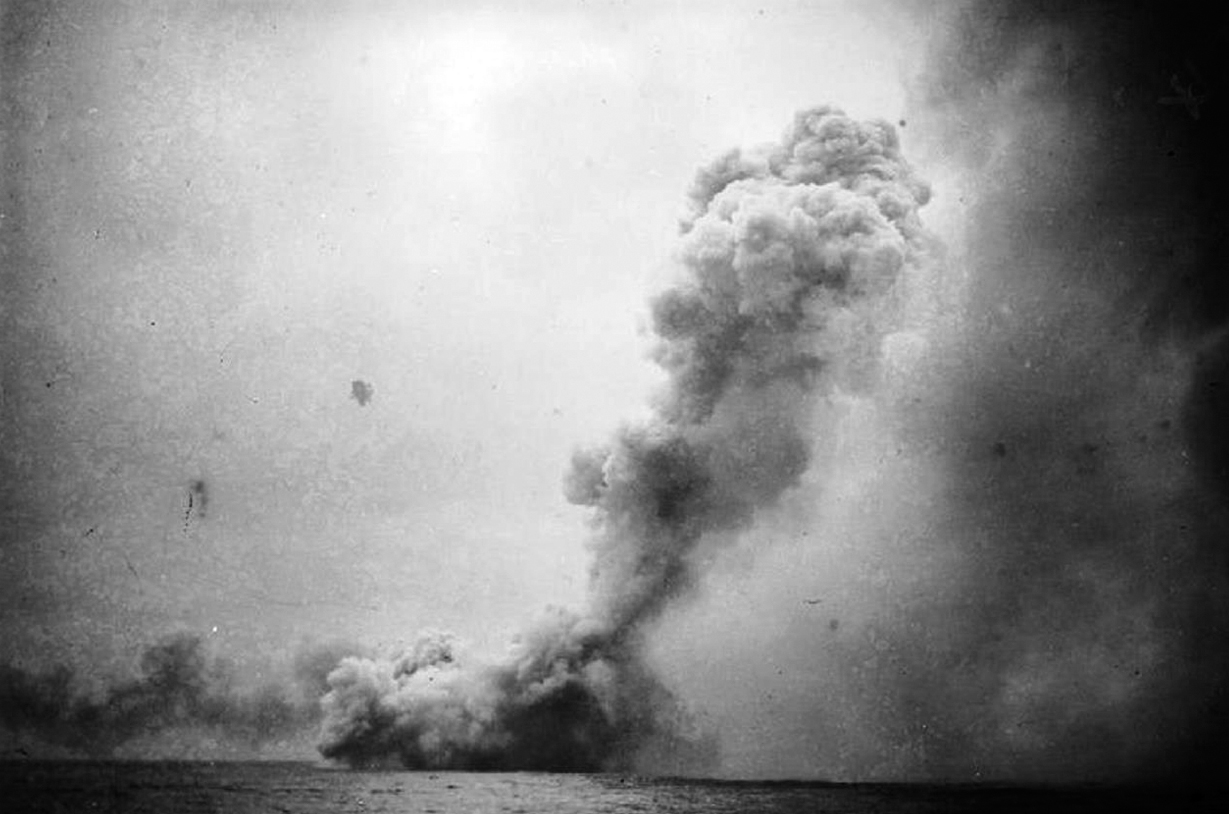
The funeral pyre of HMS Queen Mary during the Battle of Jutland. After a German salvo had hit this battlecruiser amidships, her bows plunged down and her stern rose high in the air. A few minutes later there was nothing to be seen but this pillar of smoke rising hundreds of feet into the air. All but nine of her 1,266 crew were lost – two of the survivors were picked up by German ships. (Historic Military Press)
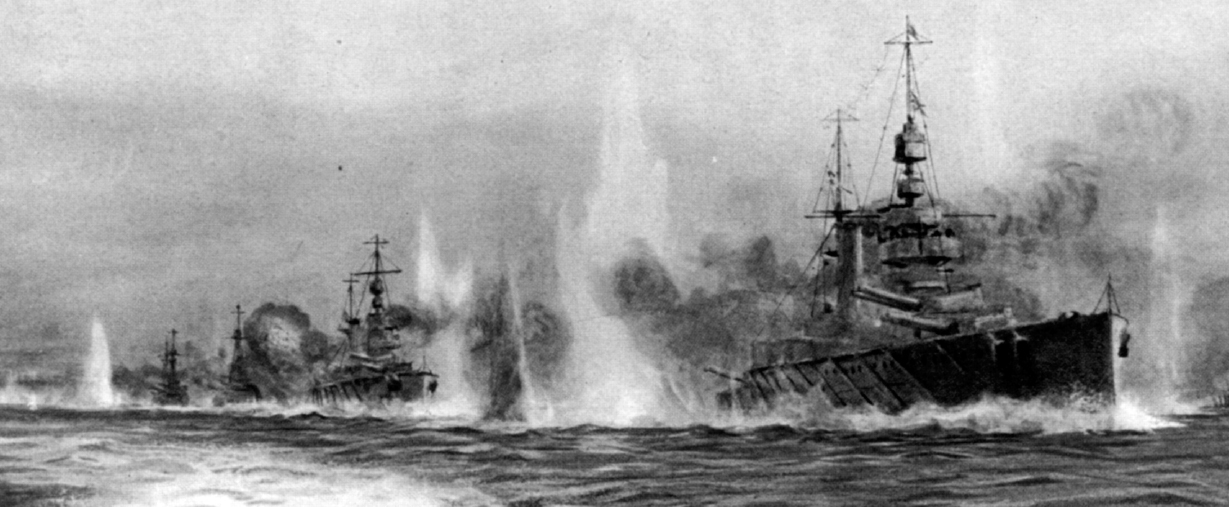
HMS Lion leading the battlecruisers during the Battle of Jutland. At one point in the battle, a heavy shell struck HMS Lion’s Q-turret, entered the gun-house, burst over the left gun, and killed nearly the whole of the guns’ crews. It was only the actions of Major F.J.W. Harvey, RMLI that saved the flagship from sudden destruction; in spite of both his legs being shot off he was able to pass the word down to close the magazine doors and flood the magazines. Harvey thus prevented the fire which had started from reaching the ammunition, an action for which he was posthumously awarded the Victoria Cross. (Historic Military Press)
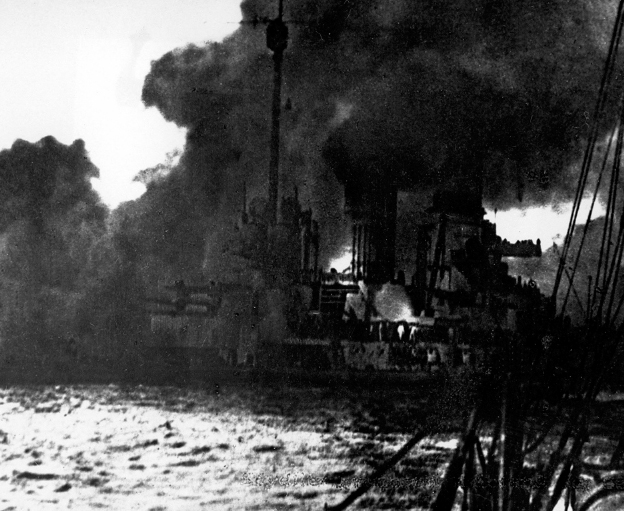
The German battlecruiser SMS Seydlitz on fire during the fighting on 31 May 1916. (NARA)
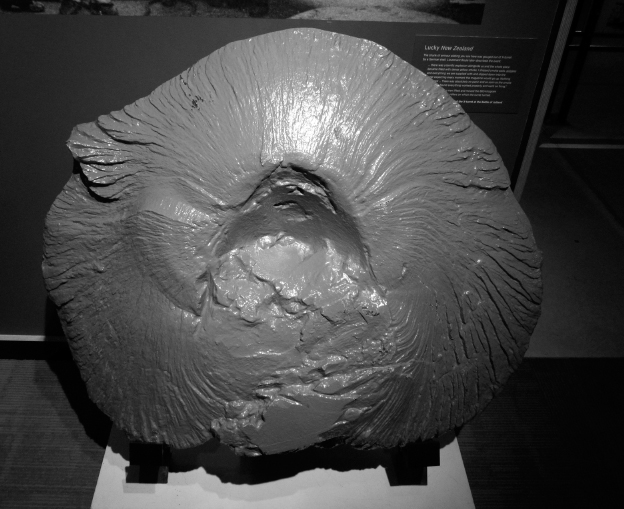
A chunk of armour knocked from HMS New Zealand’s ‘X’ Turret during the Battle of Jutland. It can be seen on display at the Torpedo Bay Navy Museum in Auckland.
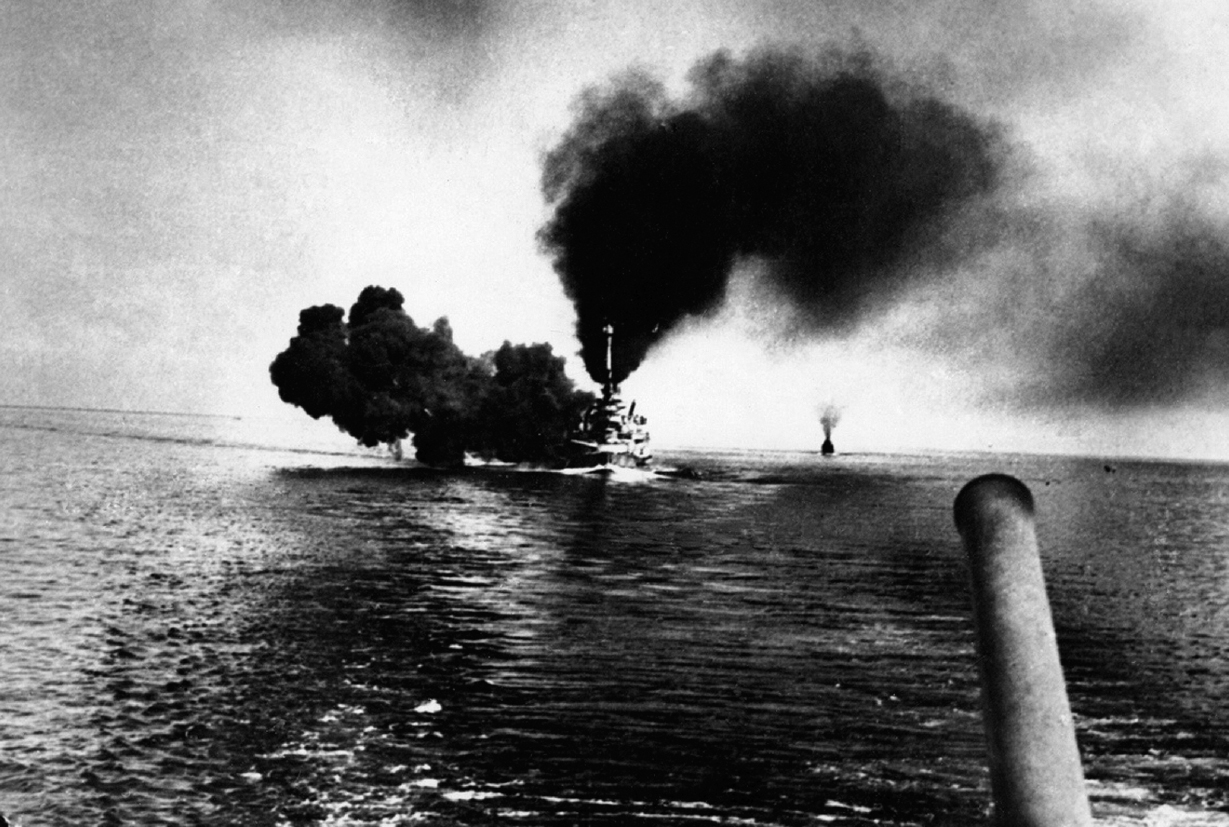
The German battleship SMS Schleswig-Holstein fires a salvo during the Battle of Jutland. (NARA)
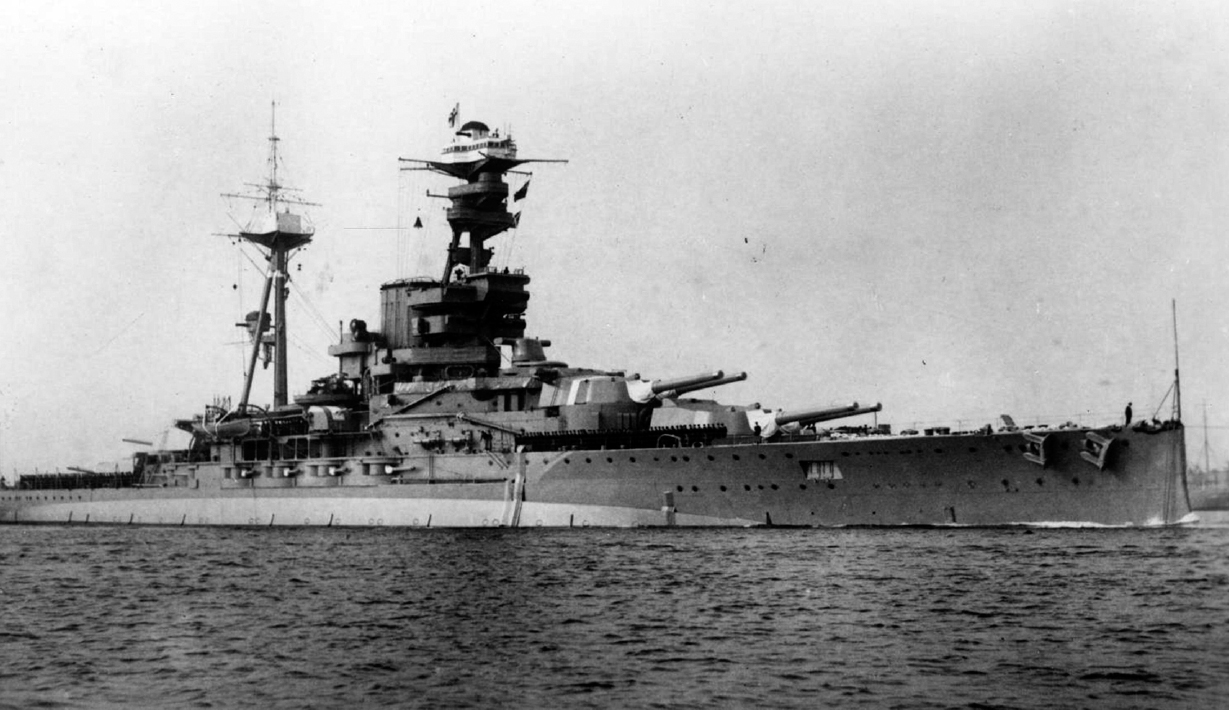
The Revenge-class battleship HMS Royal Oak. Completed in 1916, Royal Oak first saw action at the Battle of Jutland. (US Library of Congress)

British and German sailors buried side by side in Frederikshavn Cemetery. Pictured here during the 1920s, the British memorial is on the left; the German one nearest the camera. Frederikshavn is a port in northern Jutland, about twenty-five miles from the northernmost point of Denmark. Buried there are four First World War casualties, all naval ratings killed in the Battle of Jutland. (Historic Military Press)
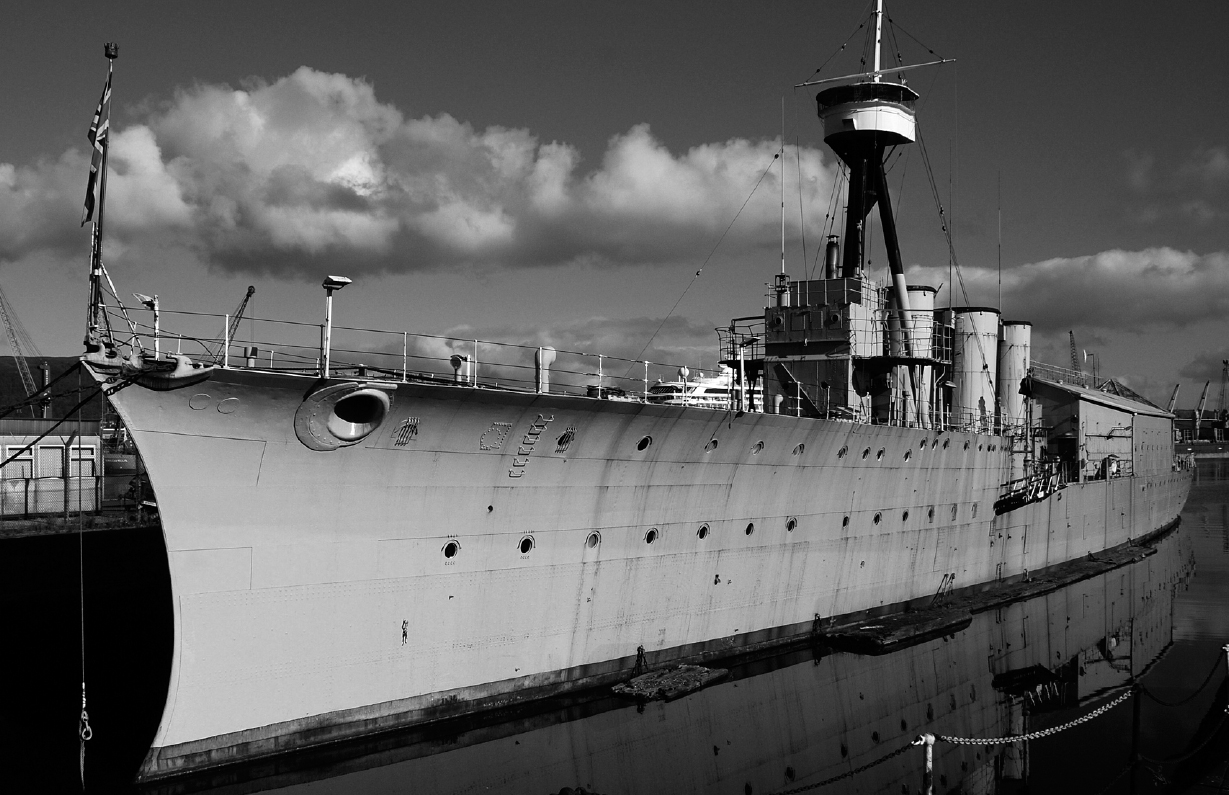
Above and Below: A surprising relic from Jutland – the last surviving warship that participated in the battle which is still afloat. HMS Caroline, a C-class light cruiser, was built by Cammell Laird at Birkenhead, and launched in December 1914. Along with her sister ships of the Fourth Light Cruiser Squadron, HMS Caroline formed part of the antisubmarine screen for the Royal Navy battleships as they rushed south towards the German battlecruisers. During the main battle she took part in the destroyer clash between the main fleets; towards the end of this main action, her squadron caught sight of a group of German capital ships, believed to be their battlecruisers and pre-dreadnaught battleships, and fired two torpedoes at them. (Courtesy of NI Science Park)
